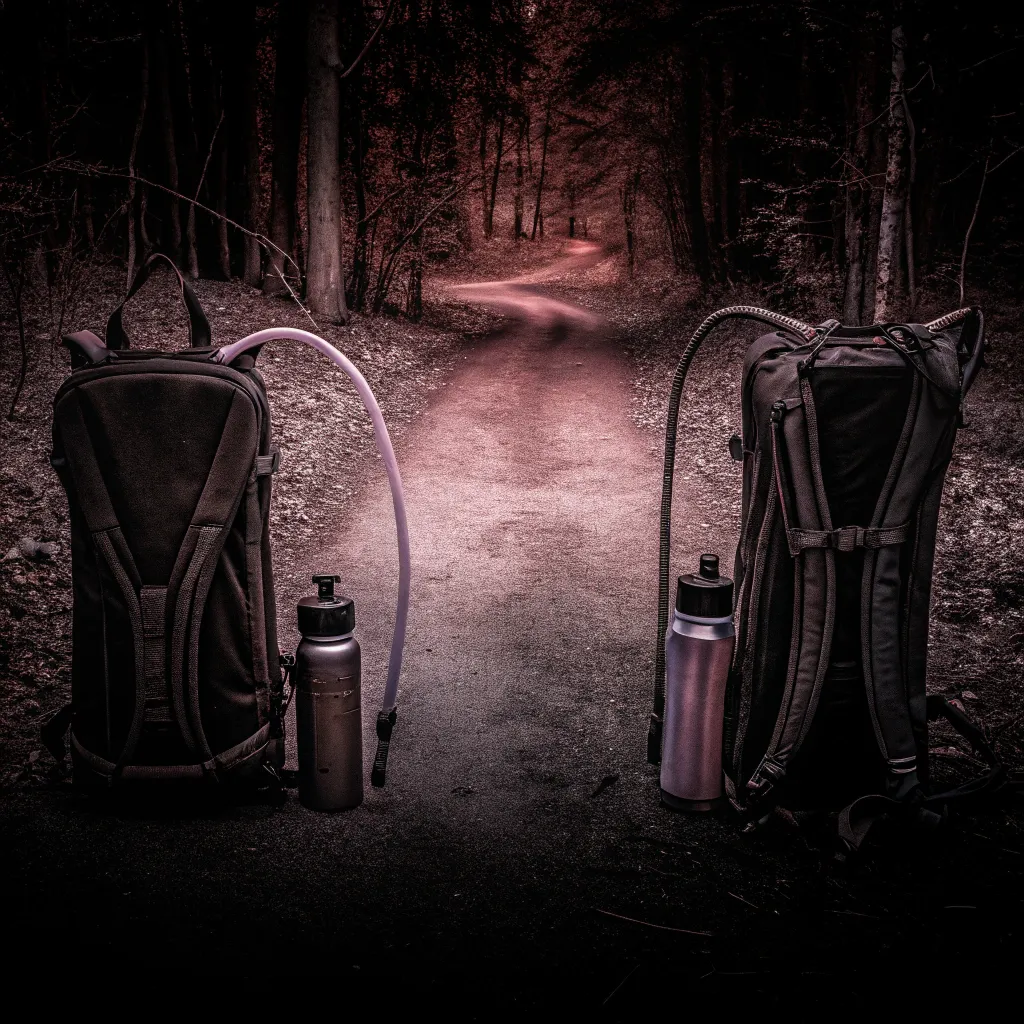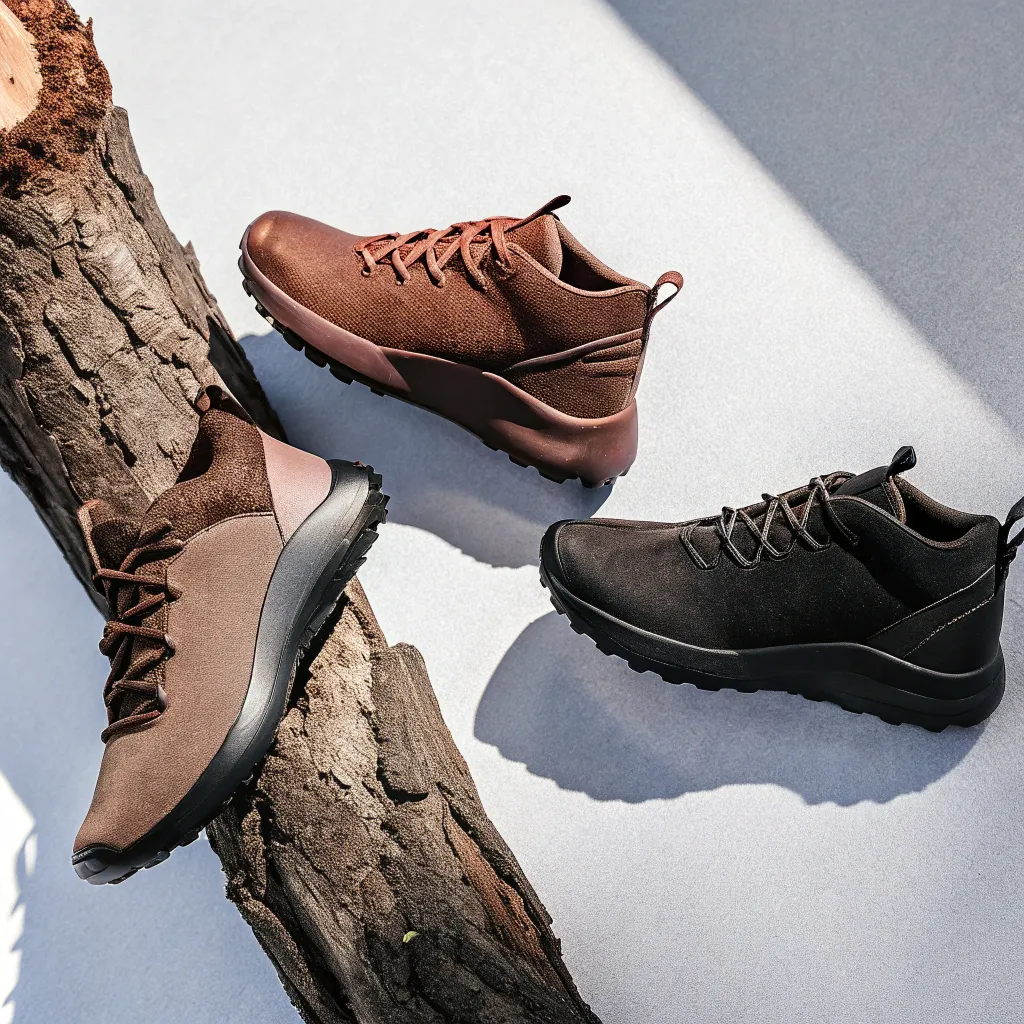Choosing between hydration packs and water bottles might seem like a minor detail when planning your hiking adventure, but this decision can significantly impact your outdoor experience. As someone who's spent countless weekends trudging up mountain trails, I've learned that how you carry your water matters almost as much as bringing enough in the first place.
The Great Hydration Debate: Understanding Your Options
Before diving into which option might work best for your hiking style, let's clarify what we're comparing.
Hydration packs typically consist of a flexible reservoir (often called a bladder) with a drinking tube that allows hands-free sipping while on the move. These systems usually integrate into backpacks or come as dedicated hydration packs with storage compartments.
Water bottles, on the other hand, range from lightweight plastic containers to insulated metal options that keep liquids cold or hot for extended periods. They require manual handling to drink from but offer simplicity and reliability.

Accessibility: Sip vs. Stop
One of the most significant differences between these options comes down to how easily you can hydrate while moving.
With a hydration bladder, the drinking tube is typically positioned near your mouth, allowing you to take quick sips without breaking stride. As one hiker noted on Reddit, "I prefer bladders for hiking. I found that I keep myself better hydrated when I don't need to stop to take my water bottle out."
This continuous access to water often results in better hydration habits. When water is literally at your lips, you're more likely to take frequent small sips throughout your hike rather than waiting until you're already thirsty – which is actually the first sign of dehydration.
Water bottles, however, usually require you to stop, retrieve the bottle from your pack or side pocket, unscrew the cap, drink, then reverse the process. This interruption might discourage proper hydration on challenging trails or when you're trying to maintain a steady pace.
Weight and Packability Considerations

The Empty Weight Factor
When empty, hydration bladders typically weigh less than rigid water bottles. A standard 3-liter bladder might weigh around 4-6 ounces, while three 1-liter water bottles could weigh 3-9 ounces each, depending on the material.
As noted on Backpacking Light forums, "Hydration bladders are generally lighter than a water bottle" and "An empty hydration bladder can be rolled up to save space." This collapsibility makes bladders particularly attractive for longer trips where pack space becomes precious as water supplies diminish.
The Full Load Reality
However, the weight equation changes when you consider how much water you'll typically carry. If you're hiking in an area with frequent water sources and only need to carry 1-2 liters at a time, water bottles might actually be the lighter option since you can adjust exactly how many you bring based on your needs.
A full 3-liter bladder weighs nearly 7 pounds—a significant load that might be unnecessary if reliable water sources dot your trail.

Durability and Reliability Concerns
One area where water bottles often shine is durability. A quality Nalgene bottle or stainless steel container can withstand years of being dropped on rocks, tossed into packs, or exposed to extreme temperatures.
Hydration bladders, while increasingly durable, still present more potential failure points:
- The drinking tube can crack or tear
- Connection points may leak
- The bite valve can malfunction
- The large reservoir is more vulnerable to punctures
I'll never forget reaching for a sip of water halfway up a steep incline only to feel the disappointing trickle from my hydration pack that had developed a small leak at the connection point. That experience taught me to always perform a thorough check before heading out—something that's much simpler with a water bottle.
Temperature Management: Hot Days and Cold Nights
Water temperature can significantly impact your hiking experience, especially in extreme conditions.
Insulation Capabilities
Insulated water bottles excel at temperature regulation, keeping water cool for hours on hot summer hikes or preventing freezing during winter adventures. Some premium bottles can maintain ice for 24+ hours—a refreshing luxury when you're sweating on exposed trails.
Hydration bladders typically offer minimal insulation, though some products include insulated tubes to prevent freezing in cold weather. The large volume of water in a bladder will warm or cool more slowly than smaller quantities in bottles, which can be either an advantage or disadvantage depending on conditions.
Freezing Concerns
In freezing temperatures, hydration bladders present unique challenges. The drinking tube is particularly vulnerable to freezing, which can block water flow entirely. While some hikers blow air back through the tube after each sip to prevent this issue, it's an added complication.
Water bottles can freeze too, but they're easier to thaw and less likely to become completely unusable. Some winter hikers carry their water bottles upside down (since water freezes from the top down) or inside their jackets to prevent freezing.
Hygiene and Cleaning: The Hidden Challenge
Perhaps the most significant long-term drawback of hydration bladders is maintenance. Their design makes thorough cleaning challenging, and the dark, moist environment can become a breeding ground for mold and bacteria if not properly maintained.
A water bottle can be quickly rinsed and visually inspected for cleanliness. Most are dishwasher-safe, making regular deep cleaning effortless. In contrast, properly cleaning a hydration bladder requires specialized cleaning tablets, brushes for the tube, and diligent drying—which can be particularly difficult with the long, narrow drinking tube.
I've known several hikers who've abandoned their hydration systems after discovering mold growing inside despite what they thought was adequate cleaning. This isn't just unappetizing—it can potentially cause illness on the trail.
Versatility Beyond Hydration
Multi-Purpose Potential
Water bottles offer versatility that bladders simply can't match. They can serve as:
- Hot water bottles for warming sleeping bags
- Containers for collecting and treating additional water
- Measuring cups for cooking
- Makeshift ice packs for injuries
- Containers for collecting foraged items
This multi-functionality makes bottles particularly valuable when trying to minimize pack weight and maximize utility of each item.
Water Treatment Compatibility
When hiking in areas where water treatment is necessary, bottles often integrate more seamlessly with filtration systems. Many popular filters screw directly onto standard bottle threads, creating a convenient filtering system.
While adapters exist for hydration bladders, the process of filling and treating water in a bladder is typically more cumbersome and carries higher risk of contamination.
What About a Hybrid Approach?
Many experienced hikers eventually settle on a hybrid system rather than an either/or approach.
A common strategy is carrying a hydration bladder for convenient sipping during active hiking, plus a water bottle for camp use, cooking, and as backup. This combination offers the best of both worlds, though at the cost of some additional weight.
As one Reddit user in the r/Mountaineering community shared: "I use both—bladder for regular sipping while moving and a bottle for when I stop or when I need to precisely measure water for cooking."
How Do I Choose? Questions to Consider
Deciding between hydration options ultimately comes down to your specific hiking style and preferences. Ask yourself:
- How long are your typical hikes? Day hikers might benefit from the simplicity of a bladder, while multi-day backpackers might prefer the versatility of bottles.
- What's the water availability on your regular trails? Frequent water sources might make bottles more practical, while long dry stretches could favor the larger capacity of bladders.
- What seasons do you primarily hike in? Winter hikers often prefer bottles due to freezing concerns with bladder tubes.
- How important is drinking without stopping? If maintaining pace is crucial, bladders offer clear advantages.
- Are you willing to commit to thorough cleaning? If not, bottles might be the more hygienic long-term choice.
Popular Options Worth Considering
Hydration Packs
CamelBak remains the industry leader, offering specialized hydration packs for various activities including hiking. Their reservoirs are known for durability and their bite valves have improved significantly over the years.
Platypus and Osprey also make excellent hydration systems with innovative features like quick-disconnect tubes and wide-mouth openings for easier cleaning.
Water Bottles
Nalgene bottles have achieved near-legendary status among hikers for their virtually indestructible design, though they're relatively heavy.
For those prioritizing weight, smartwater bottles (yes, the disposable kind) have become surprisingly popular in ultralight hiking communities due to their durability, light weight, and compatibility with popular water filters.
For temperature control, Hydroflask and Yeti make excellent insulated options, though at a significant weight penalty.
The Verdict: It Depends on Your Hiking Style
After weighing all factors, there's no universal "best" option—it truly depends on your personal preferences and typical hiking conditions.
Hydration bladders excel for:
- Day hikers wanting continuous hydration
- Those prioritizing hydration discipline
- Hikers who maintain a fast pace
- Situations where stopping is inconvenient or dangerous
Water bottles shine for:
- Longer trips requiring easy cleaning
- Winter hiking
- Situations needing versatility
- Hikers who prefer simplicity and reliability
- Those who drink less frequently but in larger quantities
I personally started with water bottles, switched exclusively to a hydration bladder for several years, and have now settled on a hybrid approach—using a 2-liter bladder for active hiking and a lightweight bottle for camp and backup. This combination has served me well across various terrains and seasons.
Whatever you choose, remember that the best hydration system is ultimately the one that encourages you to drink enough water. Dehydration remains one of the most common and preventable issues on the trail, so select the option that makes staying hydrated easiest for your personal hiking style.
Have you found your perfect hydration solution? Or are you still experimenting with different options? The trail to finding your ideal system might be as winding as the paths you hike, but it's worth the journey to discover what works best for you.






